An easy recipe for Roasted Kabocha Squash that can be enjoyed as is, or incorporated into all sorts of recipes. From creamy soups and casserole to cakes, brownies and pancakes, this delightful winter squash can go anywhere a sweet potato can go!
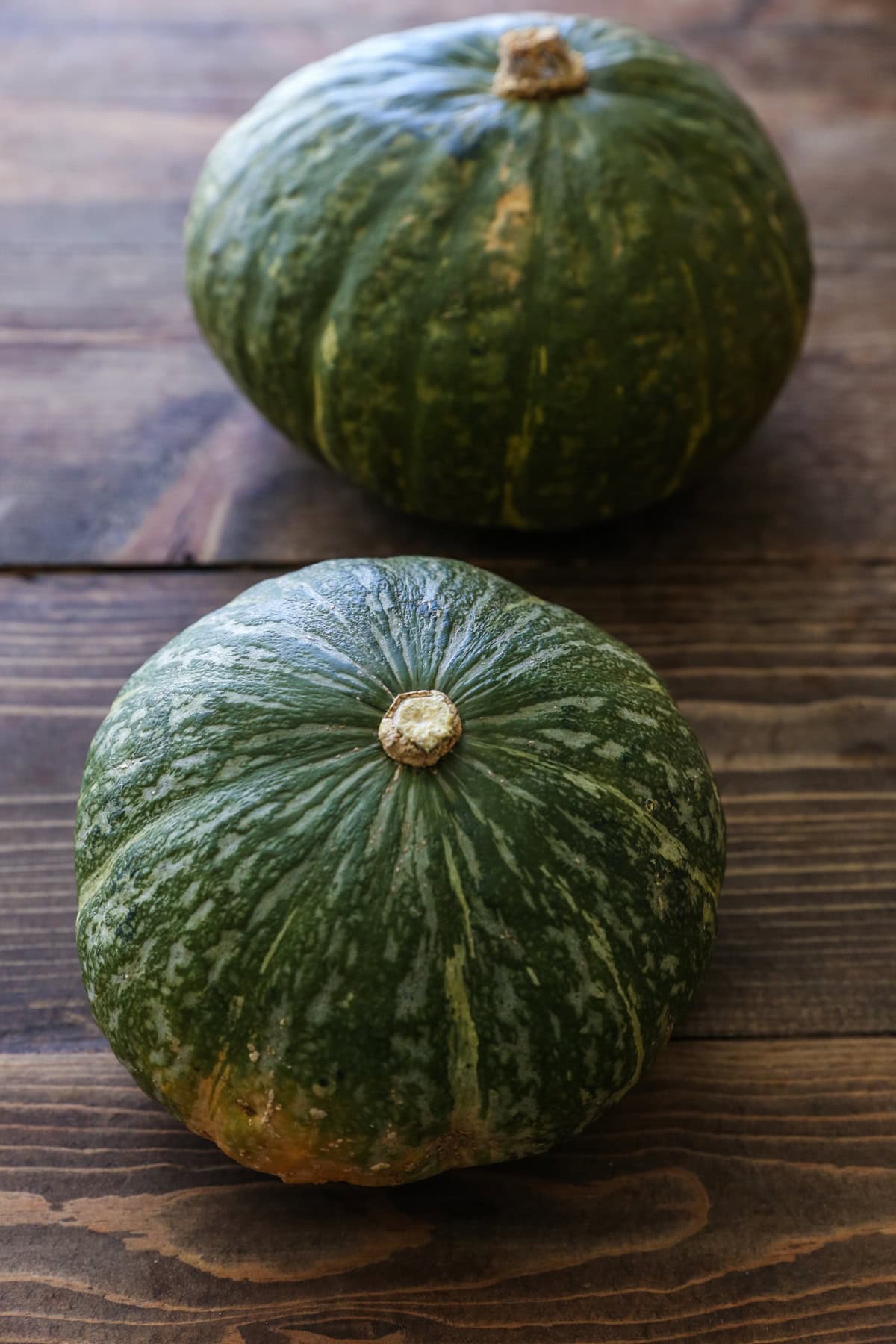
If I may be so bold as to make a generalization, there are two kinds of people in this world. Those who are obsessed with kabocha squash, and those who have never tried it.
Loaded with nutty rich flavor, natural sweetness, and a subtle creaminess, kabocha squash have the best flavor and texture of all the winter squash varieties in my humble opinion. In fact, it is one of my personal favorite winter squashes (second only to spaghetti squash).
Just like cooked sweet potatoes, roasted kabocha squash can be served as a mash or blended into soups, sauces, casseroles, cakes, brownies, pancakes, and more! Plus, they are truly delightful served on their own and make the perfect side dish during the winter months.
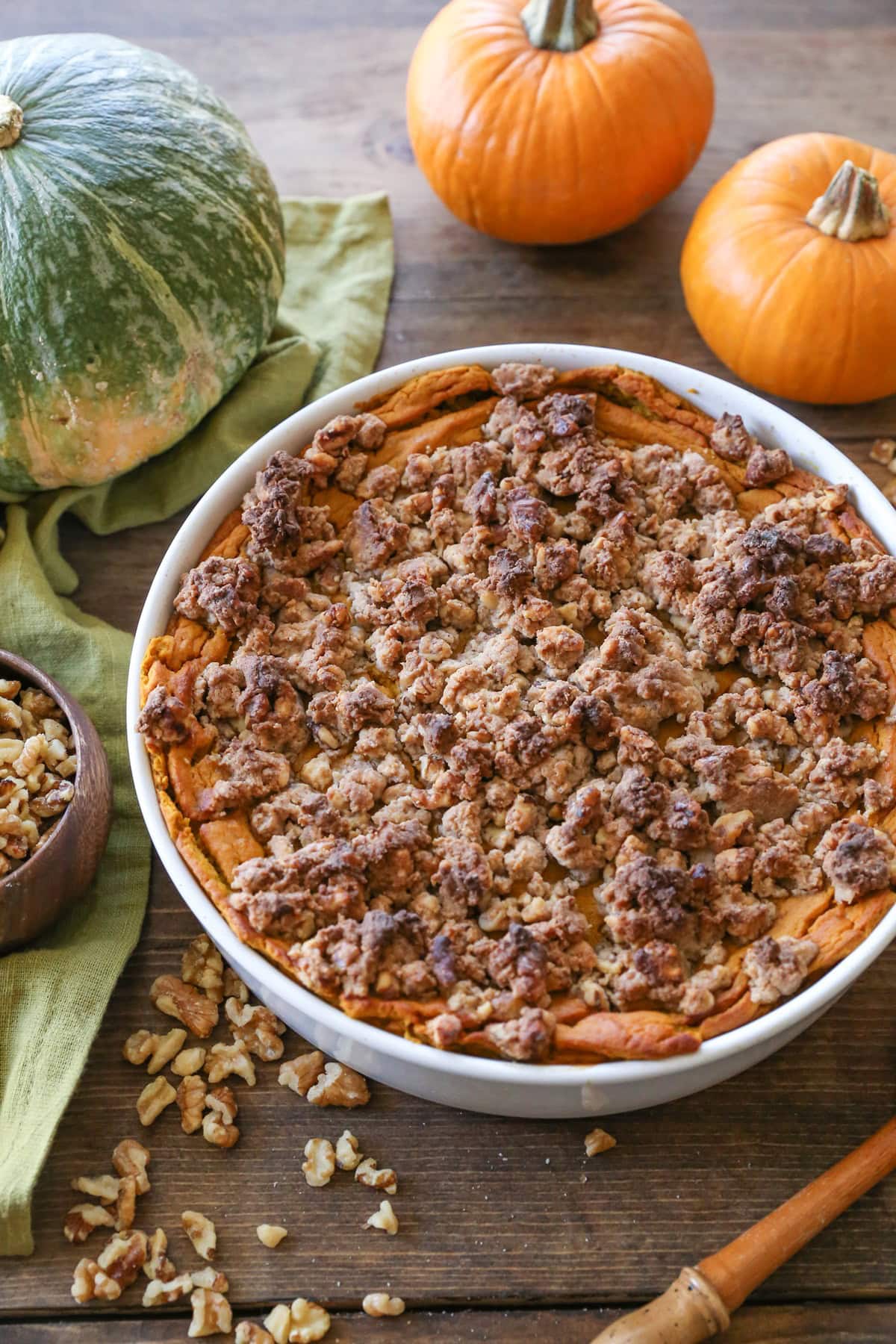
At a minimum, all we need is three basic ingredients: One kabocha squash, avocado oil, and sea salt. Most grocery stores or farmers markets carry a variety of squashes, including kabocha.
Let’s dive into the details of this easy recipe, starting with the basic ingredients.
The Ingredients:
Fresh Kabocha Squash: The star of the show here. We need one kabocha squash (also known as kabocha pumpkin) and the size doesn’t matter (we’ll get to that later). Kabocha squash is a good source of Vitamin C, Vitamin A, potassium, fiber, potassium, and carbohydrates.
The word, “kabocha” is Japanese for pumpkin, which is truly what the squash resembles – a pumpkin with dark green skin. Because it was initially grown in Japan, it is often called Japanese pumpkin.
Avocado Oil: We need to coat the flesh with some form of oil to keep it moist so that it doesn’t dry out during the baking process.
I like using avocado oil because it has a high smoke point, which is ideal for cooking at high temperatures. I don’t recommend using olive oil for roasting or searing.
Sea Salt: A sprinkle of sea salt brings out the natural sweetness of the squash and gives it a richer flavor.
Let’s learn how to cook kabocha squash in the oven!
How to Roast Kabocha Squash:
Preheat the oven to 400 degrees Fahrenheit.
Place the kabocha squash on a cutting board and turn it on its side. Using a sharp knife, carefully cut off the top of the squash.
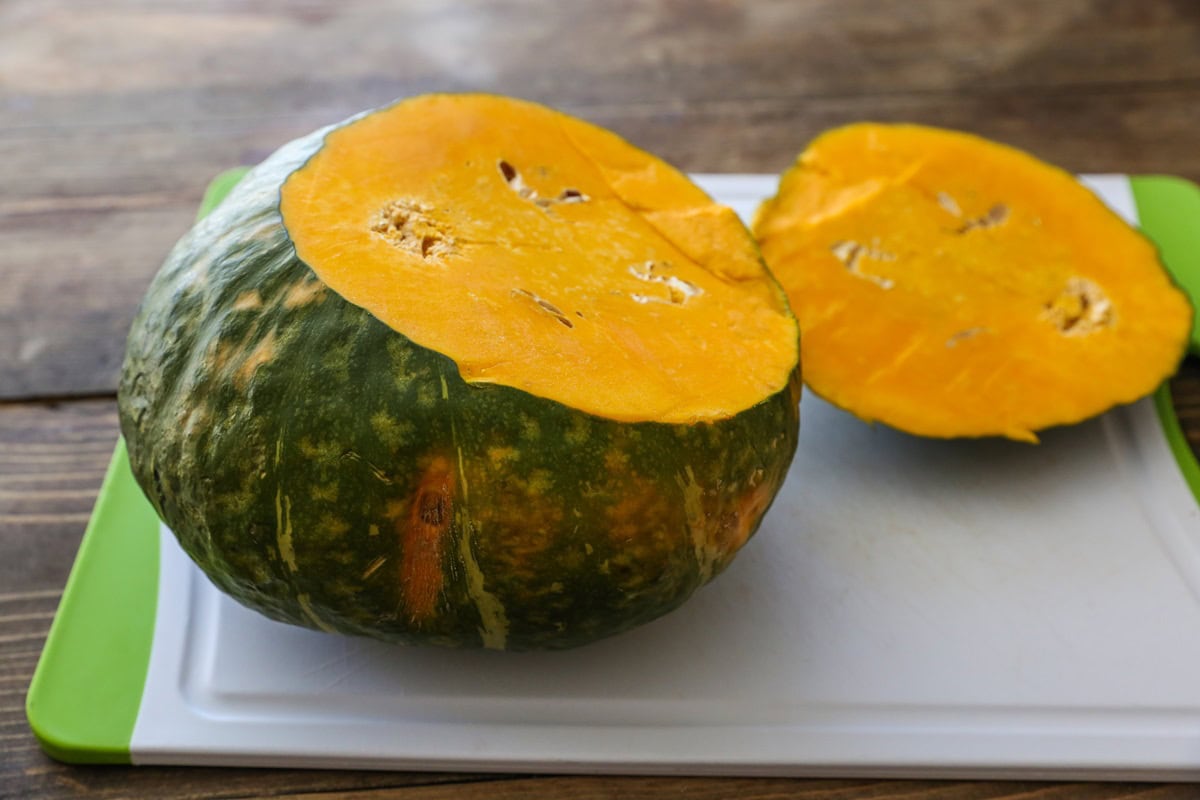
Sit the squash upright and carefully cut the squash in half. I find carefully wiggling the blade of the knife back and forth in a rocking motion helps slice through the hearty squash. Be cautious here because winter squash can be fairly challenging to cut, even with a sharp chef’s knife.
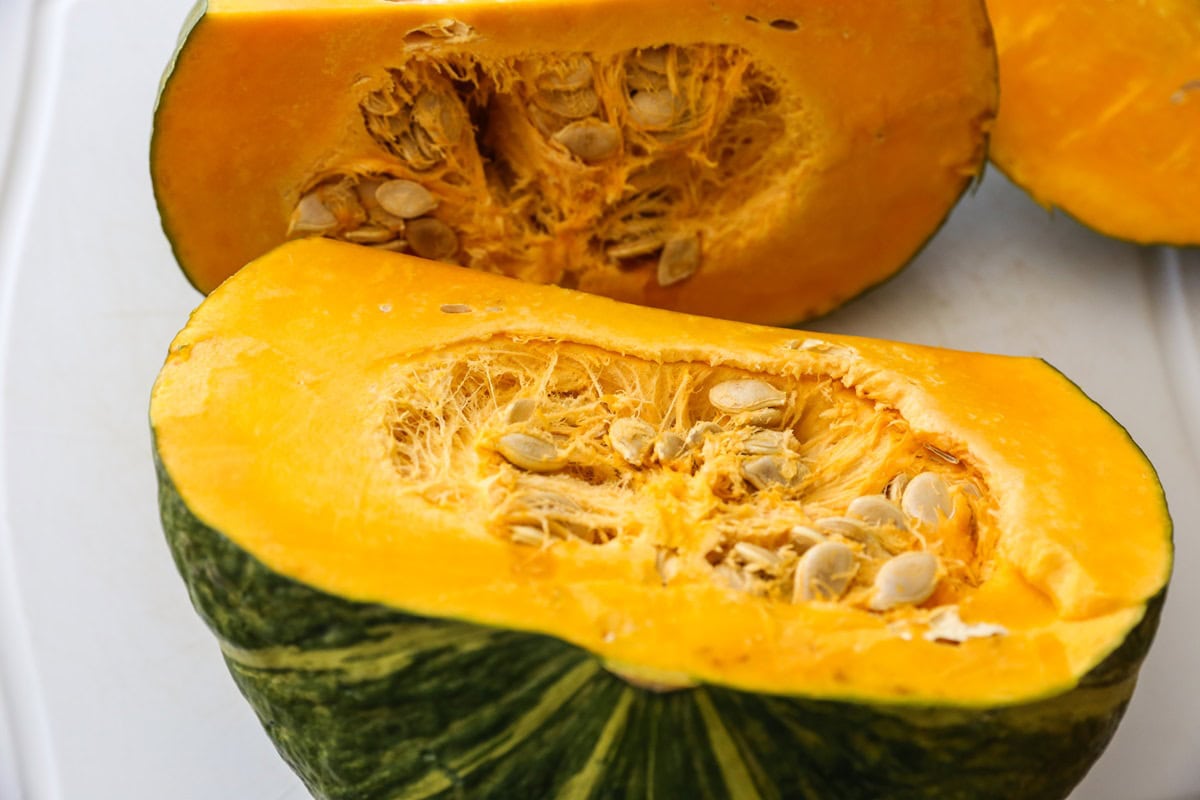
Use a sturdy spoon to scoop all of the seeds and stringy flesh out of the squash halves. I find scraping the spoon against the flesh helps release the stringy parts.
If you’d like, you can roast kabocha seeds just as you would pumpkin seeds.
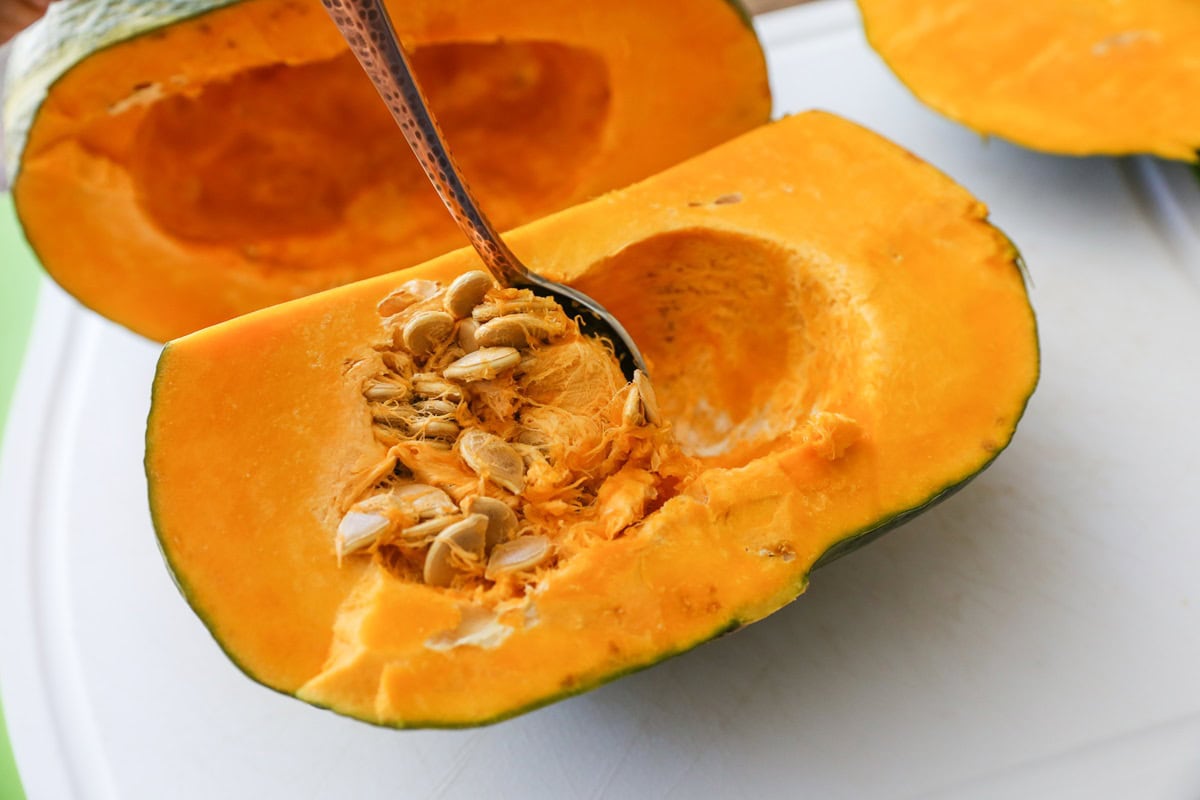
Drizzle the flesh with avocado oil. Use your hands to spread the oil over the flesh so that it is well coated.
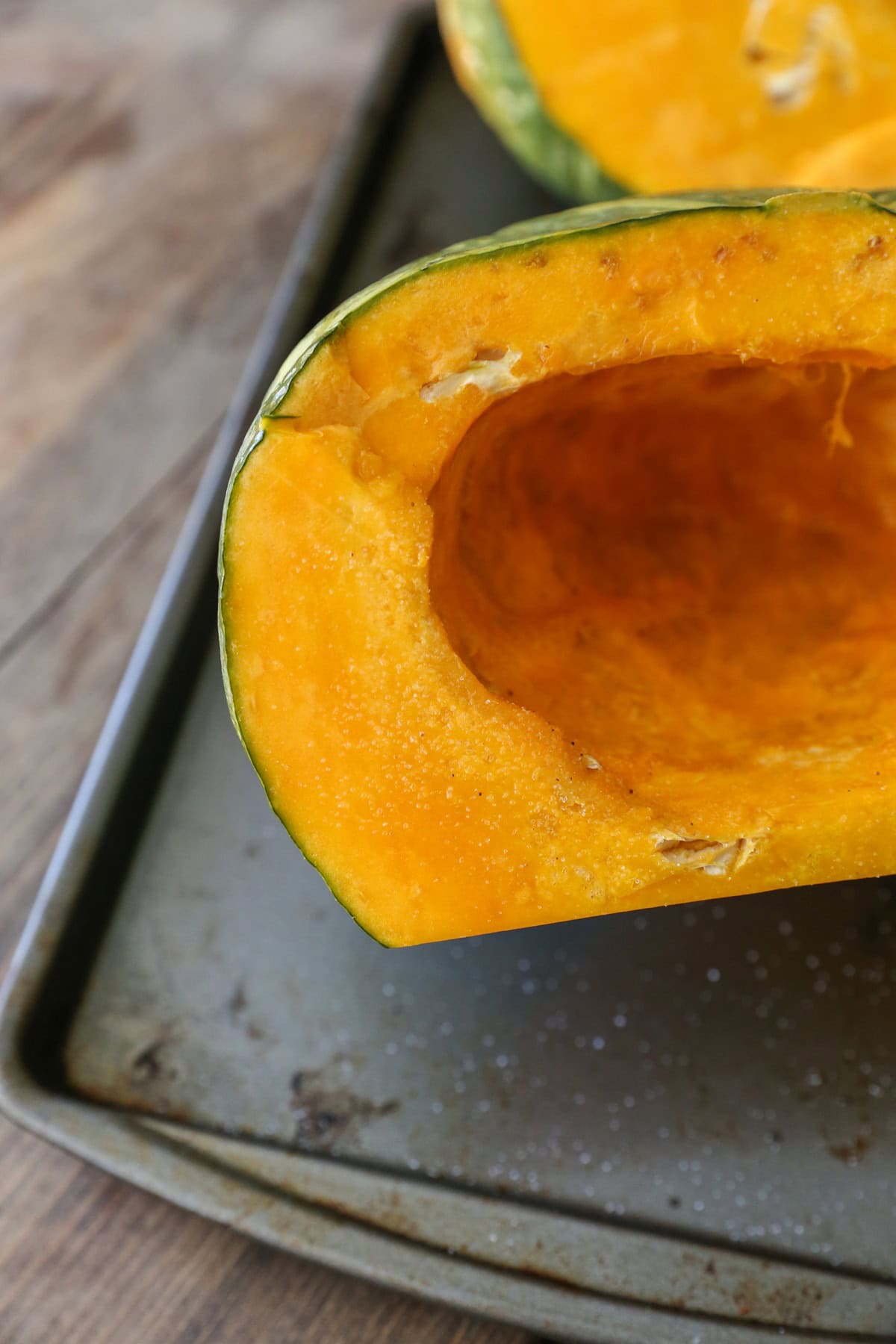
Sprinkle the orange flesh with sea salt and place squash cut-side down on a large baking sheet. Roast kabocha squash for 55 to 65 minutes, or until the flesh is very soft when poked with a fork and golden brown where it came into contact with the sheet pan.
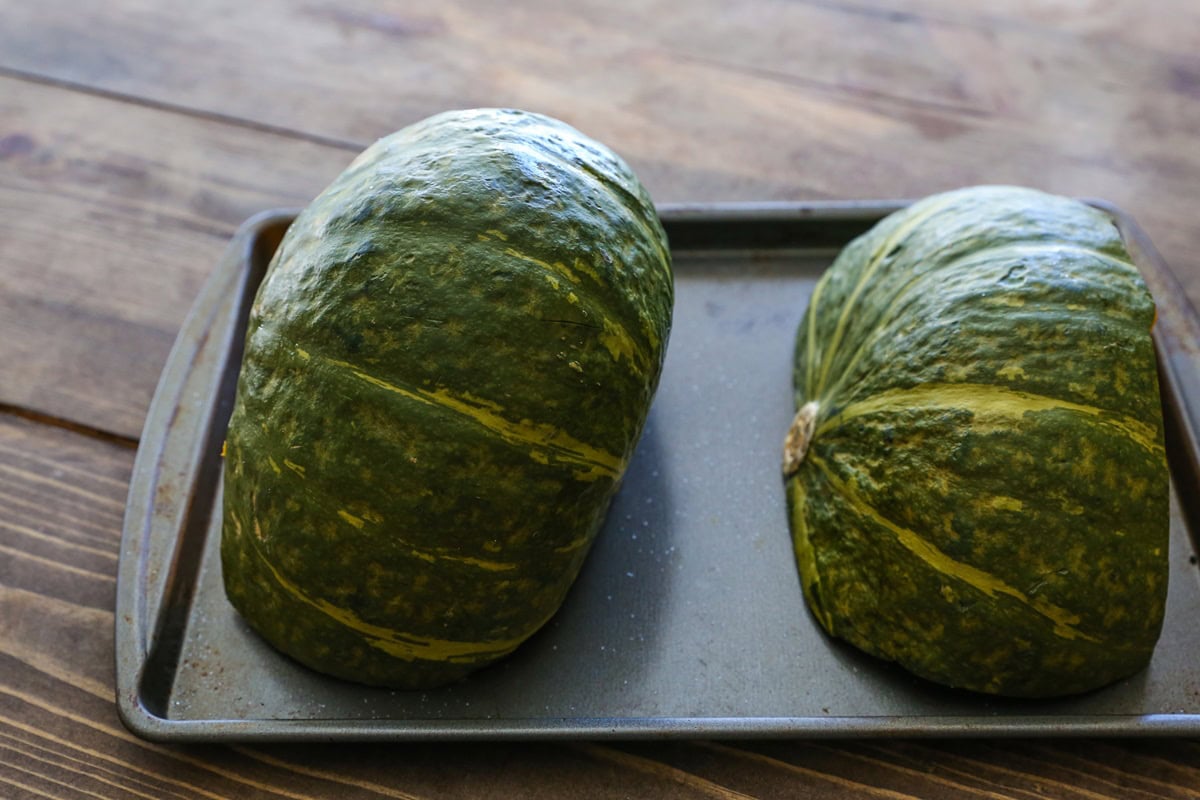
Allow the squash to cool before handling it. Note that the flesh stays hot for quite some time.
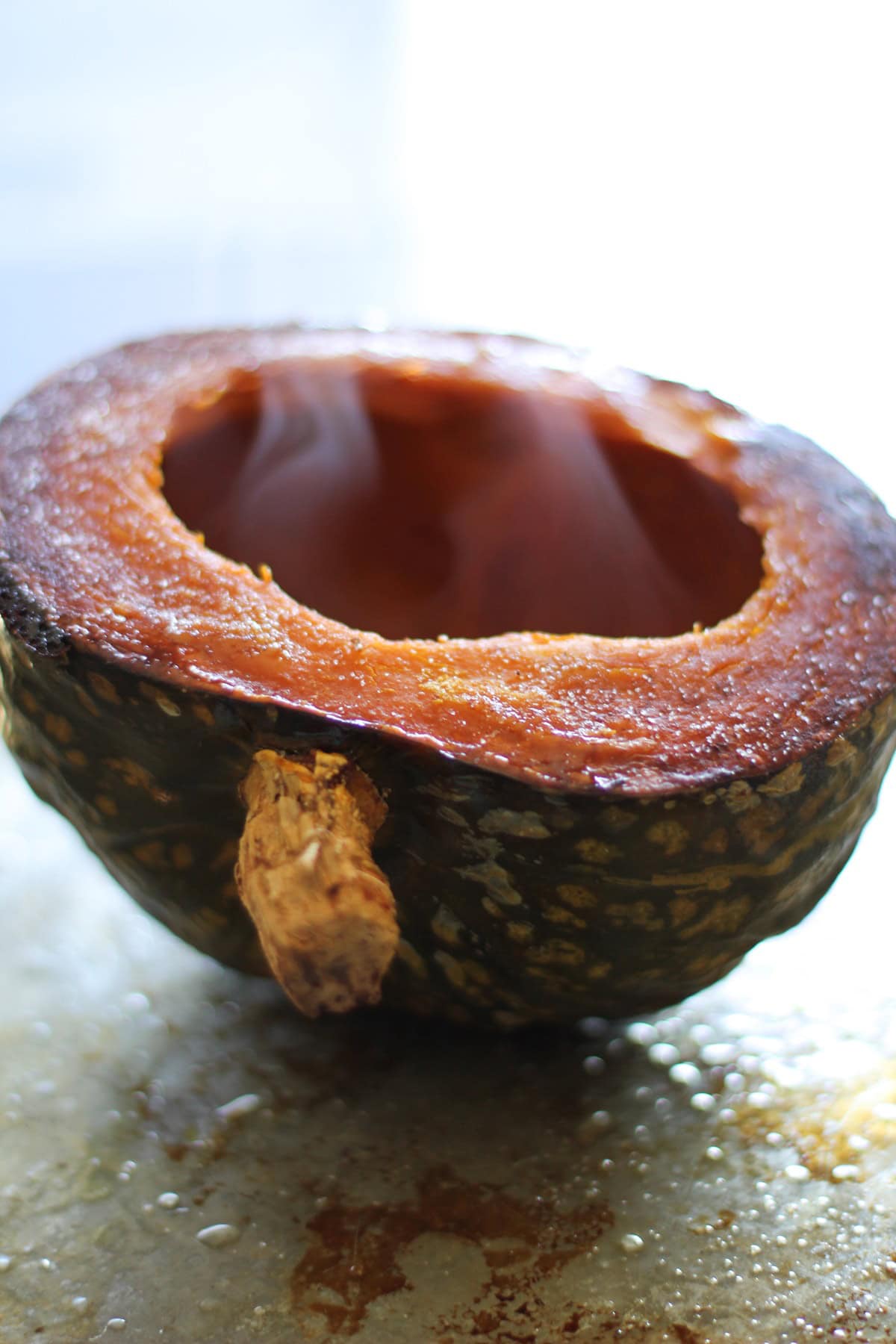
Serve and enjoy! I love serving this Japanese pumpkin with butter, cinnamon, and pure maple syrup, as these flavors complement each other beautifully. It tastes like dessert!
Store leftovers in an airtight container in the refrigerator for up to 5 days.
Note: You can also cut pumpkins and squash into wedges for a quicker roasting time, like so.
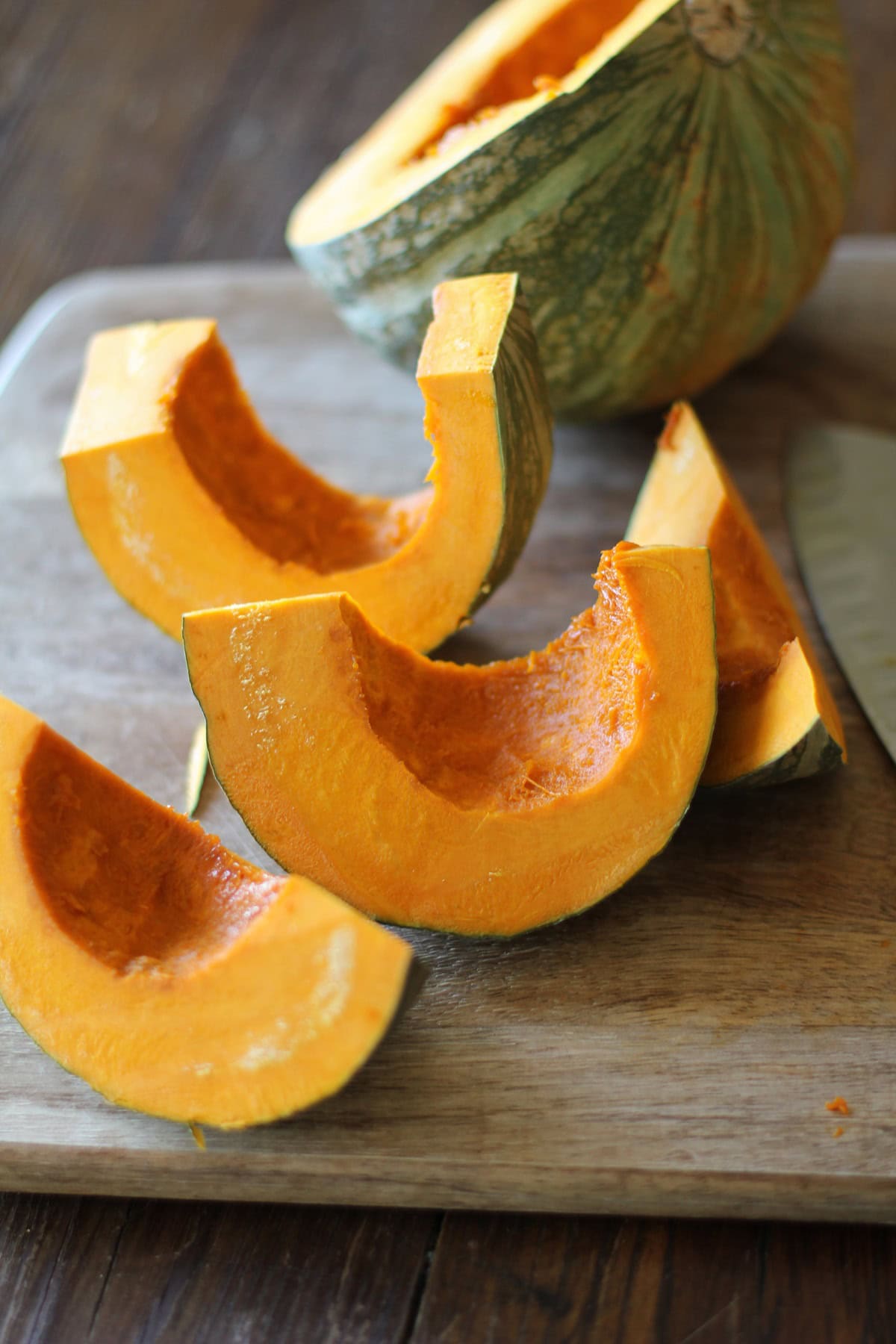
How Long To Roast Kabocha Squash?
At 400 degrees Fahrenheit, sliced in half, kabocha squash takes between 55 and 75 minutes to roast. The exact cooking time is dependent upon the size of the squash.
A typical kabocha squash weighs between 1.5 and 5 pounds with the average squash weighing 2-3 pounds. This means they generally take about the same amount of time as an equally-sized spaghetti squash.
The best way to check for doneness is to insert a fork into the orange flesh to see how soft it is. The squash is fully cooked when fork tender, meaning a fork pokes deeply into it very easily.
How to Roast Chopped Kabocha Squash:
If you would rather chop the squash into cubes or chunks rather than roasting a whole squash, here’s what you do.
Follow the same instructions above for cutting into the squash and scooping out the stringy insides and seeds.
Use a vegetable peeler to peel the hard outer skin layer. Chop the squash into 1-inch cubes and transfer to a large baking sheet in a single layer.
Drizzle with avocado oil and a little maple syrup if you’d like. Sprinkle with cinnamon and sea salt. Use your hands to toss everything together so that the chunks of squash are well-coated.
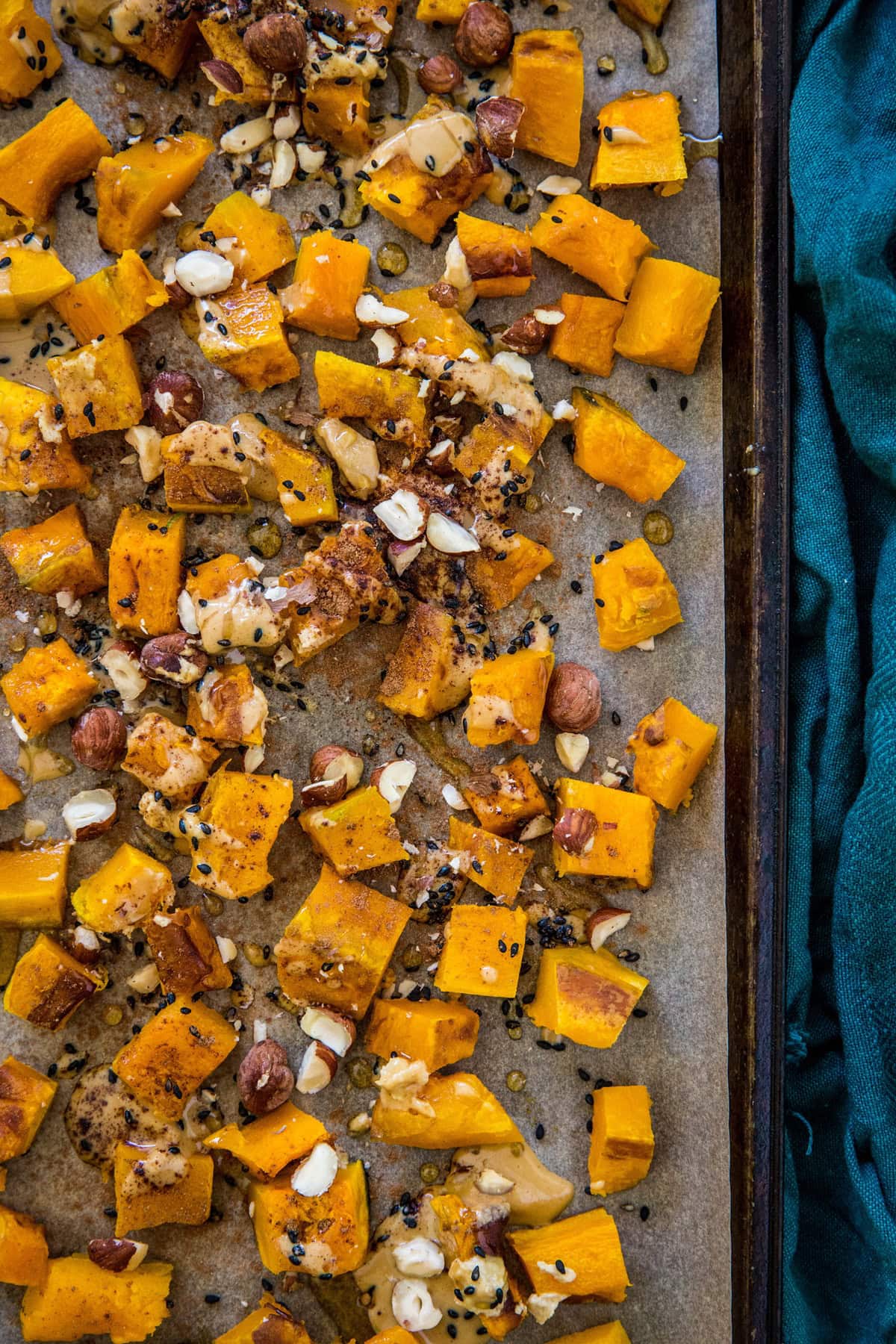
Roast for 25 to 35 minutes (without opening the oven!), until squash is golden-brown and cooked through.
For a fun and frisky side dish, make my Roasted Kabocha Squash with Cinnamon Maple Tahini.
Is Kabocha Squash Skin Edible?
Yes, kabocha squash skin is edible, as is the skin of all other winter squashes.
The better question is, why would you want to eat the skin of the kabocha squash? Unlike butternut squash skin, which is relatively soft, kabocha squashes have very tough skin, which might be a challenge to adequately chew.
Now that we know how to cook kabocha squash, what are some fun things we can do with it?
What to Do With Kabocha Squash:
- Make a Mash: Prepare my Creamy Kabocha Squash Mash for a winter squash puree that goes well alongside most main dishes.
- Blend it Into Soup: Love creamy soups? Make this Easy Chipotle Lime Squash Soup!
- Bake a Cake: Use leftovers in my Kabocha Squash Spice Cake.
- Make a Casserole: Just like Sweet Potato Casserole, this Kabocha Squash Casserole is a lovely side dish during the fall and winter months.
- Pancake Them: Use leftover squash in place of sweet potato in these Sweet Potato Rolled Oat Protein Pancakes.
- Bake a Batch of Brownies: Swap out the mashed sweet potato for mashed winter squash in these Healthy Sweet Potato Brownies.
And so much more!
The next time you’re craving winter squash, try this beauty out and let me know what you think! You’ll love the sweet flavor of this easy kabocha squash recipe.
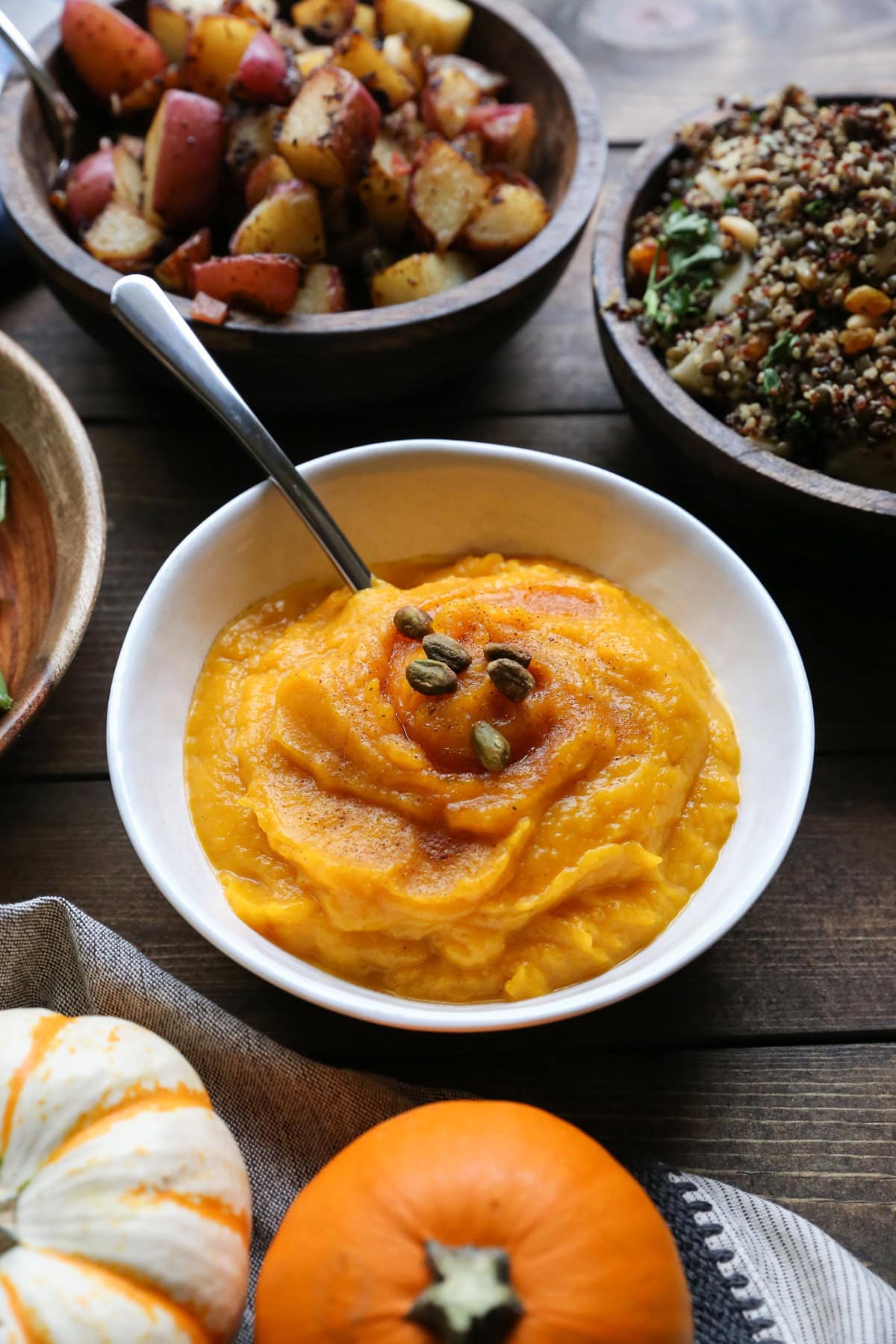
If you enjoy cooking winter squash, also try some of my other basic tutorials.
More Winter Squash Recipes:
- How to Roast Delicata Squash
- Roasted Acorn Squash
- How to Roast Spaghetti Squash
- Cinnamon Maple Roasted Butternut Squash
Drop a comment below letting me know what you do with your roasted squash!
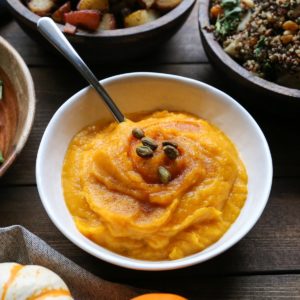
Roasted Kabocha Squash Recipe
Equipment
Ingredients
- 1 (3 to 5 pound) kabocha squash
- 1 to 2 Tbsp avocado oil
- 1/4 tsp sea salt to taste
Optional Additions for Serving:
- 3 to 4 Tbsp unsalted butter
- 2 Tbsp honey or pure maple syrup
- 1/2 tsp cinnamon to taste
Instructions
- Preheat the oven to 400 degrees Fahrenheit.
- Place the kabocha squash on a cutting board and turn it on its side. Using a sharp knife, carefully cut off the top of the squash. Sit the squash upright and carefully cut the squash in half. I find carefully wiggling the blade of the knife back and forth in a rocking motion helps slice through the hearty squash. Be cautious here because winter squash can be fairly challenging to cut, even with a sharp chef’s knife.
- Use a sturdy spoon to scoop all of the seeds and stringy flesh out of the squash halves. I find scraping the spoon against the flesh helps release the stringy parts. If you’d like, you can roast kabocha seeds just as you would pumpkin seeds.
- Drizzle the flesh with avocado oil. Use your hands to spread the oil over the flesh so that it is well coated. Sprinkle the orange flesh with sea salt and place squash cut-side down on a large baking sheet. Roast kabocha squash for 55 to 65 minutes, or until the flesh is very soft when poked with a fork and golden brown where it came into contact with the sheet pan.
- Allow the squash to cool before handling it. Note that the flesh stays hot for quite some time.
- Serve and enjoy! I love serving kabocha squash with butter, cinnamon, and pure maple syrup, as these flavors complement each other beautifully. It tastes like dessert!
- Store leftovers in an airtight container in the refrigerator for up to 5 days.
Nutrition
This post contains affiliate links, which means I make a small commission off items you purchase at no additional cost to you.
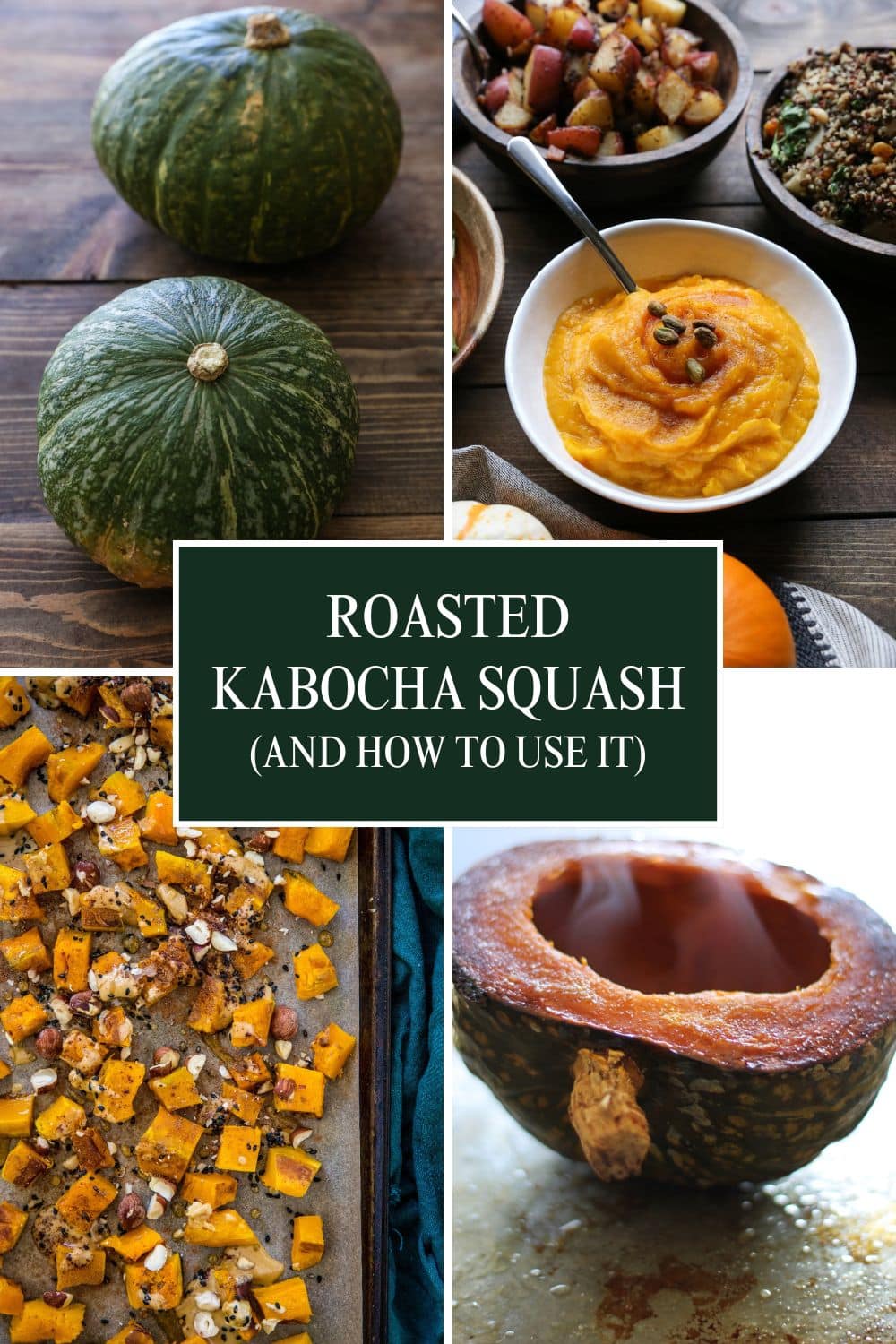

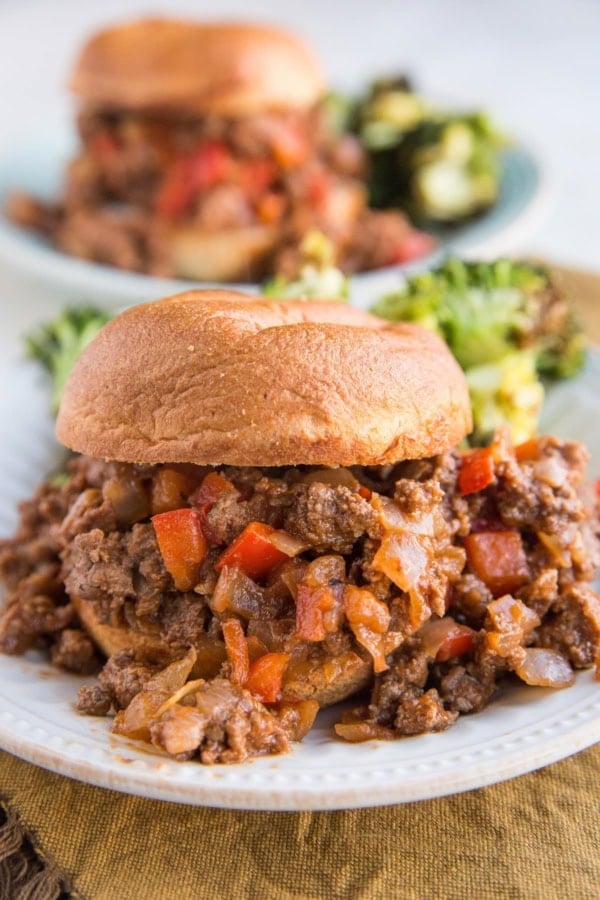
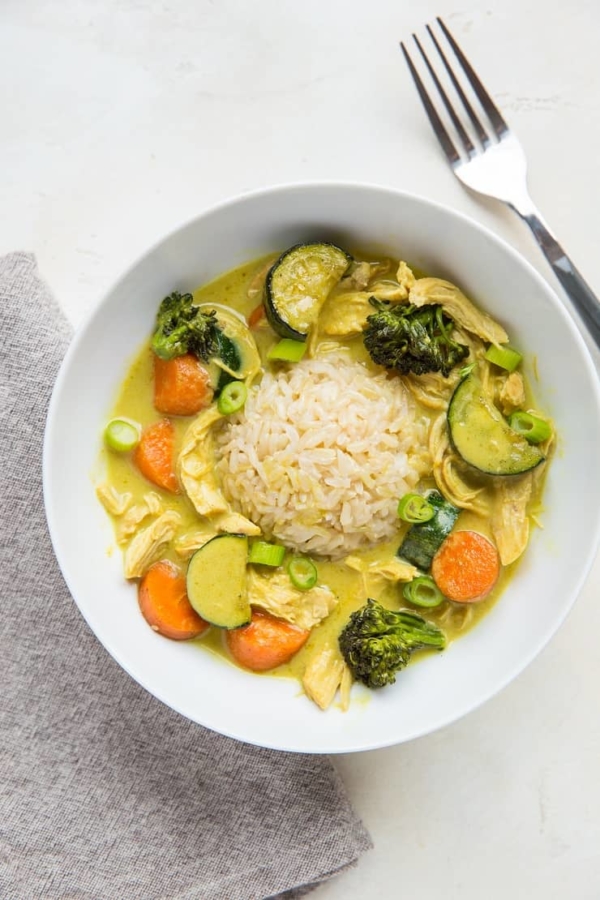
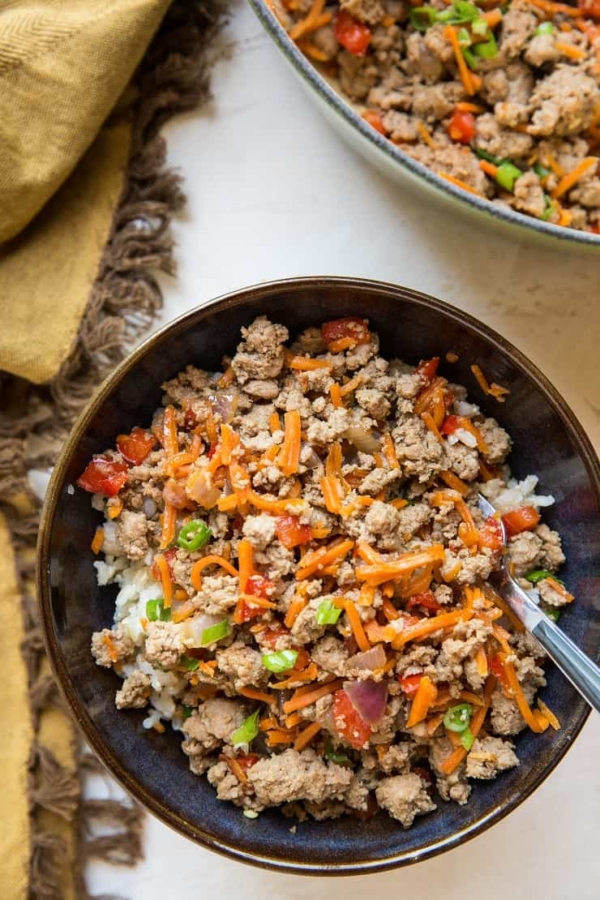
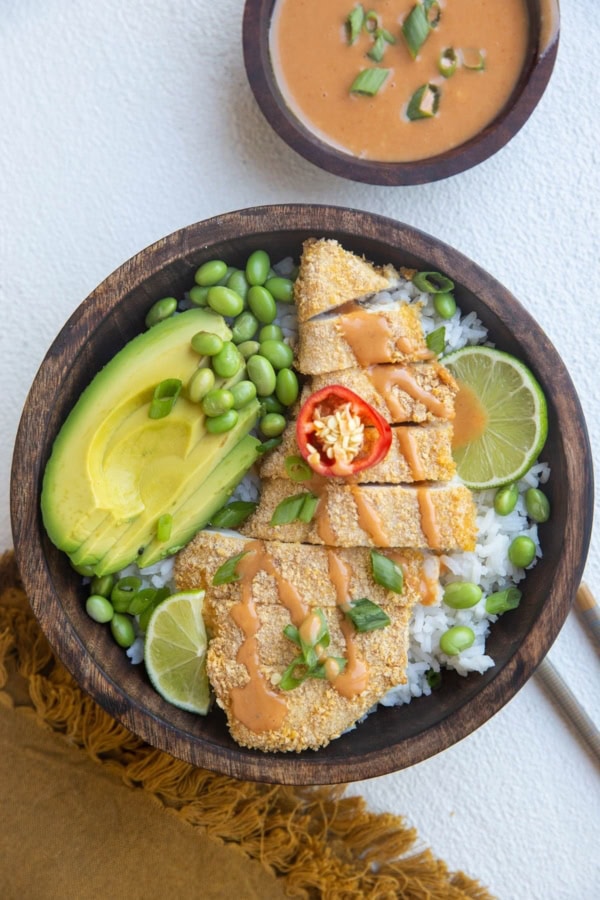









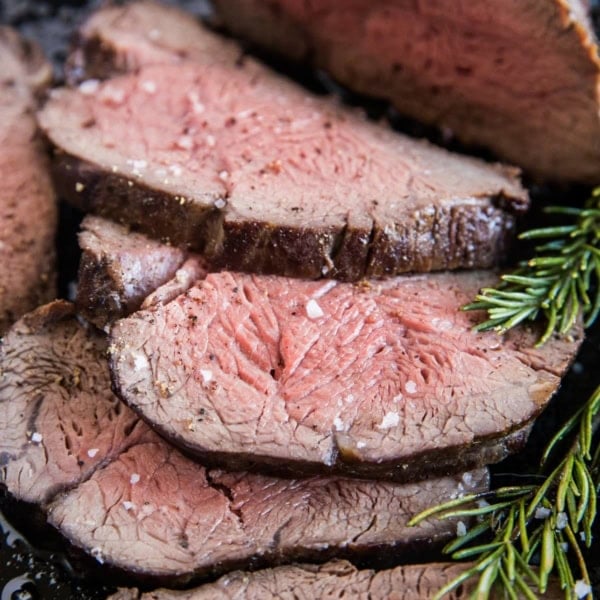
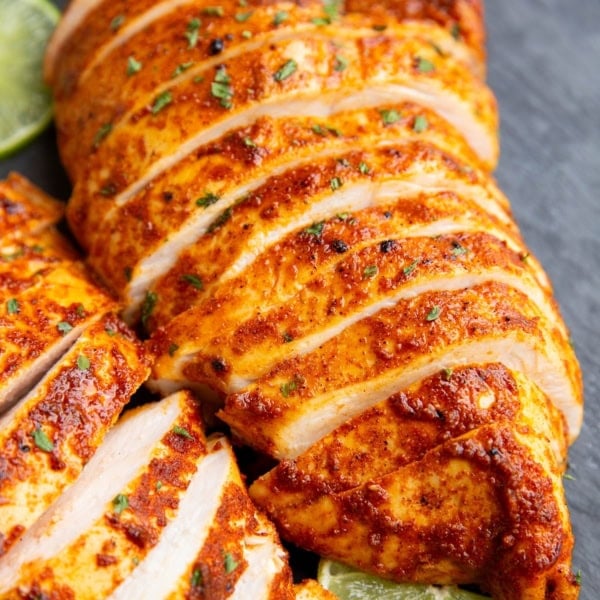
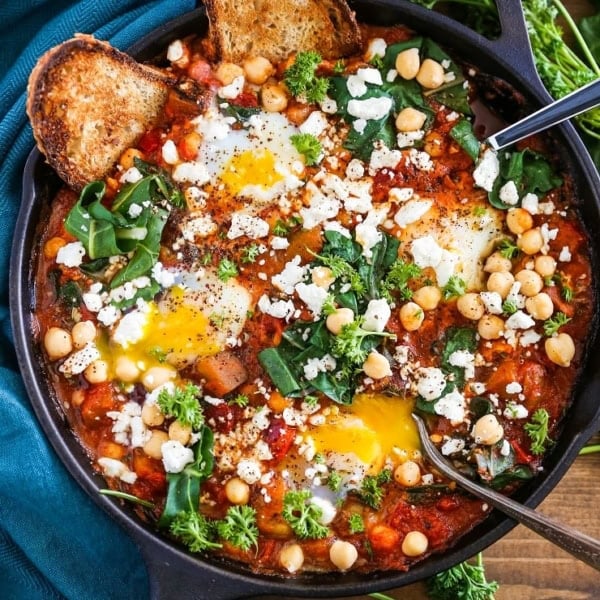
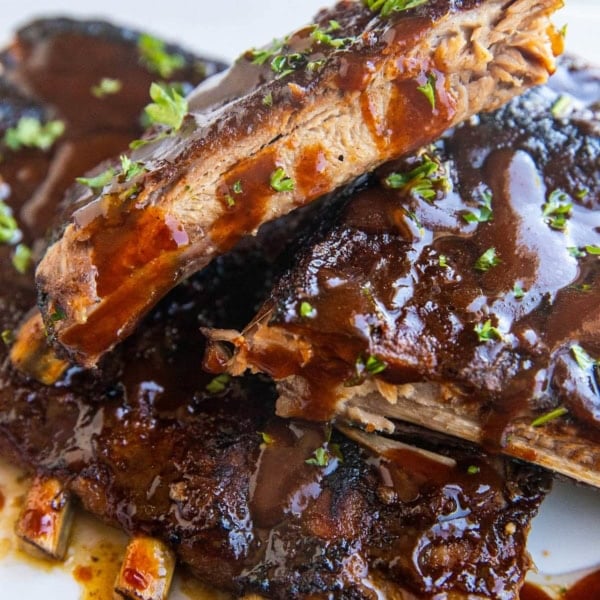
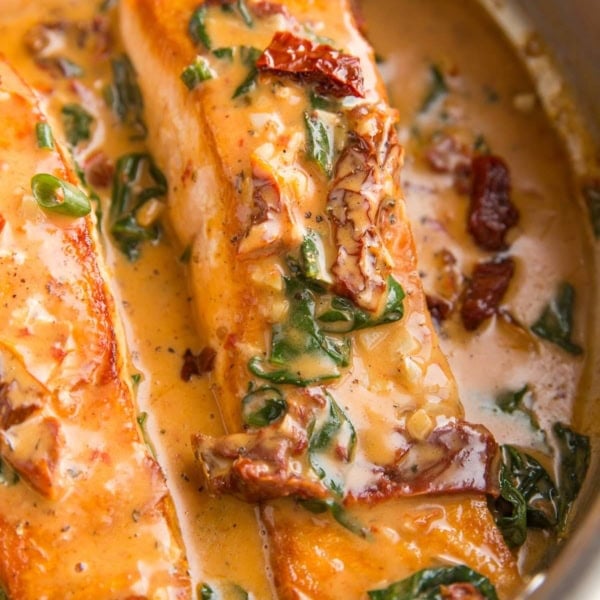
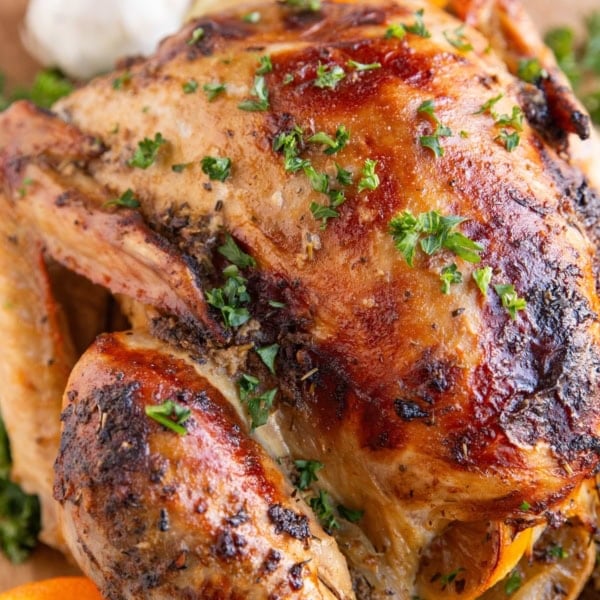
Delicious and a welcome change from sweet potatoes and butternut squash!
I’m happy you enjoy it! I think it’s a lovely change-up, too!